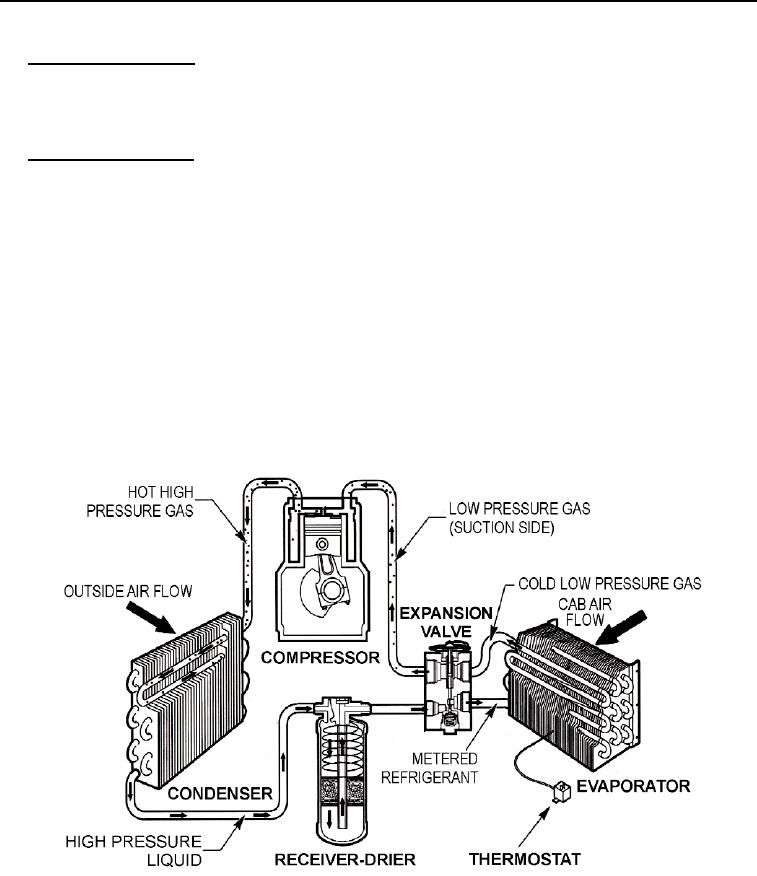
TM 5-2420-232-10
0003
HEATING, VENTILATION, AND AIR CONDITIONING (HVAC)
0003
1.
HVAC Heating Operation - Cab heating consists of a heater radiator inside the cab, a temperature control valve to mod-
erate the amount of water flowing through the heater radiator, the engine, and an electric fan. Hot coolant from the engine
flows through the temperature control valve into the heater radiator and back to the engine. The electric fan circulates air
over the heater radiator, extracting the heat from the coolant and warming the cab. The coolant flows from the heater radi-
ator back to the engine.
HVAC Cooling Operation - The cab cooling system consists of an engine-driven refrigerant compressor, a condenser
2.
mounted on the tropical roof, a refrigerant dryer unit, an expansion valve, and an evaporator coil. The compressor pumps
refrigerant and oil around the system. It raises the temperature and pressure of the refrigerant gas and forces it to the con-
denser where it changes state and becomes a liquid. The compressor also sucks the vaporized refrigerant out of the evapo-
rator and back inside itself in the form of gas.
The refrigerant leaves the compressor and moves through a high pressure hose to the condenser. Inside the condenser the
gas changes state and becomes a liquid. It is still hot and under pressure. The liquid refrigerant continues to move inside
the system, out of the condenser to the receiver/dryer. The receiver/dryer serves as a storage tank and filter for the refrig-
erant. When the refrigerant moves from the receiver/dryer, it travels to an expansion valve at the inlet to the evaporator
coil. The expansion valve bleeds high pressure refrigerant into the evaporator coil, where the pressure is low. The refriger-
ant expands rapidly in this low pressure environment. When it expands it changes state to a gas and rapidly cools and
absorbs heat from the air as the blower forces air through the fins.
Any moisture in the air (humidity) condenses on the fins of the evaporator as water droplets, which drain through a drain
tube from the A/C unit. This action dehumidifies the air in the cab, contributing to driver comfort. Cab air forced across
the evaporator coil gives up its heat energy to the cold refrigerant inside the coil. The cooled air circulates the cab. The
refrigerant continues to expand and absorb heat energy in the evaporator coil. The refrigerant changes from a liquid to a
gas before it leaves the evaporator coil on its way back to the compressor to start the cycle again.
435-A0233
Figure 8. HVAC
03
END OF WORK PACKAGE
0003-10

